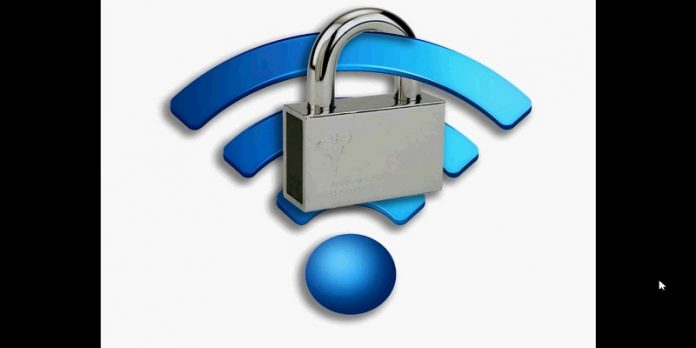Most gadgets and routers today use WPA2 as an encryption protocol to encrypt your Wi-Fi traffic hence chances of you being affected are high. With the widely publicized story, we are sure many of you have already taken preliminary steps to stop the problem. But still, there are some you are probably missed, so read on to find out what are further things you can do to protect yourself from the KRACK Wi-Fi hacksMost gadgets and routers today use WPA2 as an encryption protocol to encrypt your Wi-Fi traffic hence chances of you being affected are high. With the widely publicized story, we are sure many of you have already taken preliminary steps to stop the problem. But still, there are some you are probably missed, so read on to find out what are further things you can do to protect yourself from the KRACK Wi-Fi hacks.
1. UPDATE UPDATE UPDATE
Did you know you can update your devices to protect them from KRACK Wi-Fi vulnerability? Windows, Apple, and most major tech companies have already issued patches that would alleviate the vulnerability. So remember to update ALL your wireless devices!
Hence, ensure you update all your wireless devices such as laptops, phones, and tablets with the most up-to-date security patches. In fact, it is advisable to turn on automatic updates for upcoming vulnerabilities since, in the age of cybersecurity, this will not be the final attack. Most current operating systems have become quite incredible at automatic updates; they just have to allowed to check for the newest update. After all, it is an essential thing to ensure your clients and routers against KRACK to prevent any potential attack.
2. Use a reliable VPN
VPN technology was the first widely recognized solution for the KRACK vulnerability. This is because, as most people know, a VPN can create a secure tunnel where all your traffic goes through. Hence, even if people can access the Wi-Fi illegally through the WPA2 vulnerability, your traffic would still remain hidden.
However, with that in mind, you should be careful with VPN services that you select. Always use a trusted VPN. Remember, when you rely on a VPN, you redirect all your internet traffic to a VPN server in a data center somewhere thus an attacker cannot spy on your activities on your Wi-Fi network, however, untrustworthy VPN companies may log all your internet traffic and use it against you.
3. Check your router
A router’s software must be updated regularly. If you use a supplied router from your Internet Service Provider (ISP), ask the company to know when they will be patching their branded kit. If they don’t give you an answer, keep on reminding them. You can ensure your router is updated by exploring the administration panel. You can obtain the instructions from the user guide of your ISP-branded router to help you access the admin page.
Furthermore, going back to the VPN issue, while updating patches would solve most problems with your laptops, computers or mobile devices, IoT devices can only be protected via a VPN for routers patched against KRACK. Be sure to avoid using the most vulnerable gadgets on your network until their manufacturers release patches or you get a VPN for your router.
4. Potentially AVOID wireless connections
In today’s highly connected world, it seems that Wi-Fi is indispensable, but in reality, that is NOT entirely the case.
For those who do their surfing at home, if you find that your router not only doesn’t have a fix, you also don’t have a patched Wi-Fi router that you can instead, simply opt for the Ethernet! Plug the Ethernet cable into your router and switch off its wireless capability until it’s patched. But this applies when your router has a provision to disable Wi-Fi. Ensure to switch off Wi-Fi for some gadgets to enable all traffic to go through the Ethernet cable. However, if you still prefer to use Wi-Fi on some gadgets, you can change to Ethernet for your crucial gadgets only.
However, what about your mobile devices? Since your phone and tablets might lack an Ethernet port, to ensure nobody spies on you, you can consider turning off Wi-Fi on your device and use cellular data as a substitute. It has been observed that devices running Android 6.0 or above are more exposed than other devices.
This is also true when you are out in town. Problems with free Wi-Fi hotspots are well-documented, particularly when it comes to hacking your devices for your personal information. So, although it may be slower or more expensive, try to avoid free public Wi-Fi hotspots to maintain security.
5. Establish the HTTPS Everywhere extension
You can lessen risks by prioritizing encrypted internet traffic than unencrypted traffic. Thanks to the EFF for the release of a smart browser extension known as HTTPS Everywhere. If your browser is Google Chrome, Firefox or Opera, it is good to install the extension. Configuring it is very simple, any user can do it. If a site uses both unencrypted access (HTTP) and encrypted access (HTTPS) the HTTPS Everywhere extension automatically invokes your browser to use the encrypted version to encrypt your traffic. However, for a browser that uses only unencrypted access, the extension cannot do anything about it.
Also Read Content://com.android.browser.home/
Conclusion
The KRACK Wi-Fi hack needs to be dealt with on both ends of a Wi-Fi network as it exploits a fault in the way Wi-Fi is executed. Although many manufacturers have issued patches, you as the user must ensure you put those patches into use failure to which will see the security and privacy of your gadgets remaining broken and vulnerable for as long as they are connecting to a Wi-Fi network.

